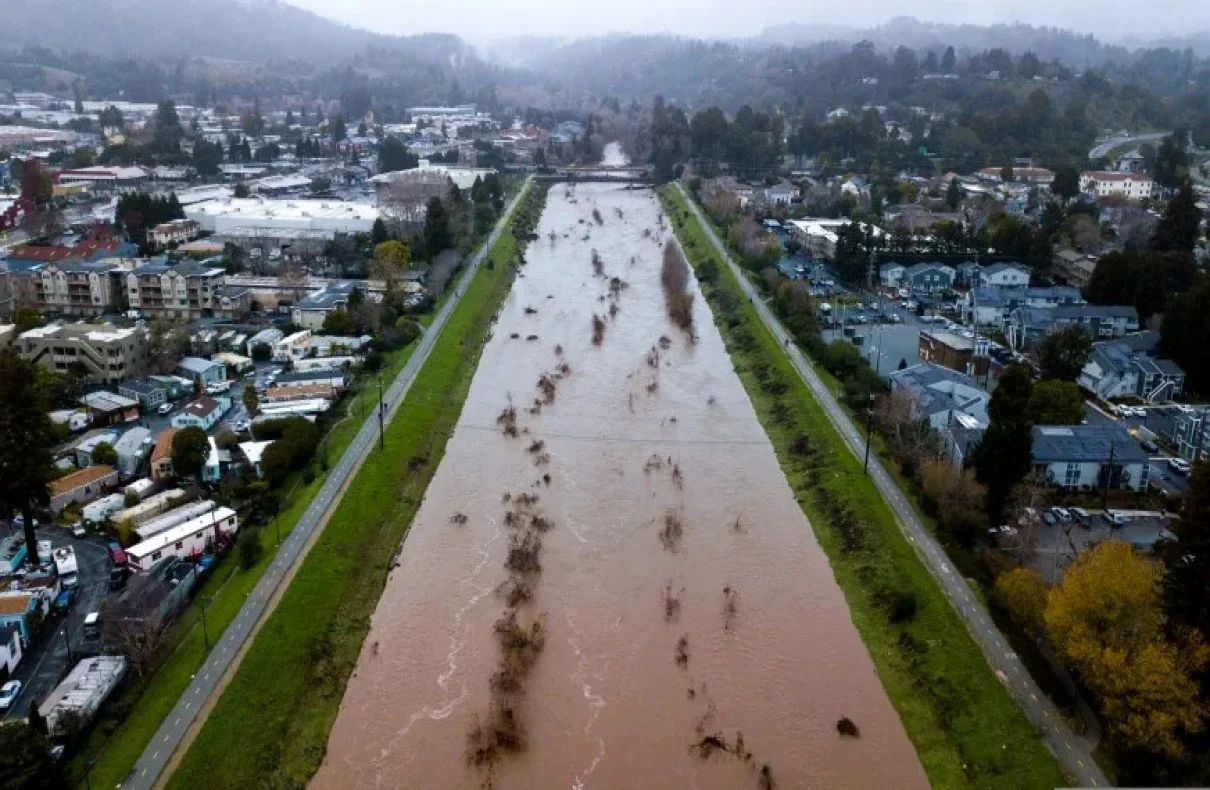
California is facing a severe weather event as a powerful atmospheric river brings heavy rain, strong winds, and the threat of flooding to the state. This intense weather system, often referred to as a “Pineapple Express,” is causing concern among meteorologists and residents alike.
Atmospheric rivers are long, narrow bands of moisture that originate in the tropics and can transport vast amounts of water vapor across great distances. In the case of California, these atmospheric rivers often form near Hawaii and then move eastward towards the West Coast. When they make landfall, they can unleash torrential rain and cause significant flooding.
The current atmospheric river hitting California is particularly potent, with meteorologists dubbing it the most powerful storm of the season. It has already impacted the northern part of the state and is expected to move southward, affecting major urban areas such as Los Angeles and San Diego. Experts estimate that up to 37 million people, or 94% of the state’s population, are at risk of life-threatening floods.
Heavy Rainfall Causes Severe Flooding in San Diego
One of the most significant risks associated with this atmospheric river is the potential for widespread flooding and mudslides. The heavy rain, combined with already saturated soils from previous storms, creates the ideal conditions for these disasters. The National Weather Service has issued warnings about flash floods, urban flooding, and debris flows in affected areas.
According to the NOAA Weather Prediction Center, rainfall amounts of 2-5 inches, and up to 6-10 inches in some spots, are expected across California. This excessive precipitation can overwhelm drainage systems and lead to rapid rises in rivers and streams. In hilly and mountainous regions, the risk of mudslides and landslides is particularly high. Evacuation warnings and orders have been issued in several counties to ensure the safety of residents.
In addition to heavy rain and flooding, the atmospheric river is also bringing hurricane-force winds to parts of California. The National Weather Service has issued a rare hurricane-force wind warning for the Central Coast, with gusts of up to 92 mph possible. These strong winds can cause widespread damage, uproot trees, and bring down power lines, further exacerbating the impact of the storm.
Coastal areas are also at risk of hazardous conditions, including damaging surf, thunderstorms, waterspouts, and even tornadoes. The combination of high winds and large waves poses a threat to beachfront properties, infrastructure, and coastal communities. Residents are advised to stay vigilant and follow any evacuation orders or safety instructions provided by local authorities.
The intense atmospheric river is not only affecting the natural environment but also disrupting daily life in California. San Francisco has already experienced flooded streets, fallen trees, and landslides, causing transportation delays and property damage. The Pebble Beach Pro-Am golf tournament was postponed due to the storm, highlighting the impact on sporting events and recreational activities.
The entertainment industry is also bracing for the effects of the storm, as the Grammy Awards are scheduled to take place in Los Angeles during the peak of the atmospheric river. The red-carpet walk and outdoor activities associated with the event may be significantly impacted by the heavy rain and strong winds. Despite these challenges, organizers are working to ensure the safety of attendees and minimize disruptions.
To address the threats posed by the atmospheric river, California has activated emergency response measures and mobilized resources to support affected communities. Local authorities are closely monitoring weather conditions and providing timely updates and warnings to residents. Evacuation centers and shelters have been established in high-risk areas to accommodate those displaced by floods or mudslides.
The state’s emergency response agencies are working in coordination with utility companies, transportation departments, and other stakeholders to mitigate the impact of the storm. Preemptive measures, such as clearing drainages and reinforcing vulnerable infrastructure, are being implemented to reduce the risk of flooding and wind damage. The public is urged to stay informed through reliable sources and follow any evacuation orders or safety recommendations.
Tragic Incident at University of Colorado: Two Found Shot Dead in Dorm Room
The intensity and frequency of atmospheric rivers in California and other parts of the world are believed to be influenced by climate change. Warmer ocean temperatures and changing weather patterns contribute to the formation of these moisture-laden systems. As global temperatures continue to rise, it is anticipated that the severity of atmospheric rivers and their associated hazards will increase.
Addressing the challenges posed by climate change requires a comprehensive approach that includes reducing greenhouse gas emissions, adapting infrastructure to withstand extreme weather events, and implementing sustainable land management practices. California has been at the forefront of climate action, implementing measures to reduce carbon emissions and promote renewable energy sources. However, the impacts of climate change are a global issue that necessitates collective efforts.
